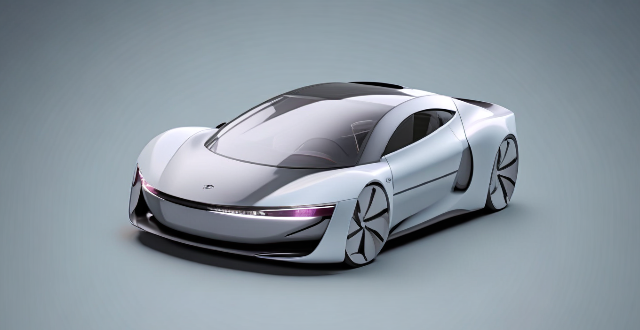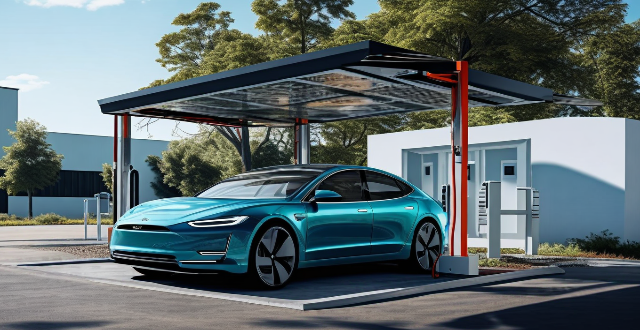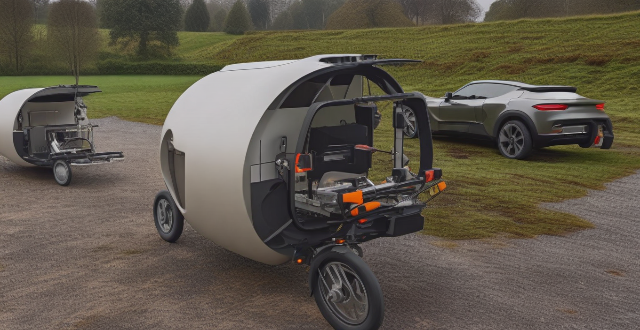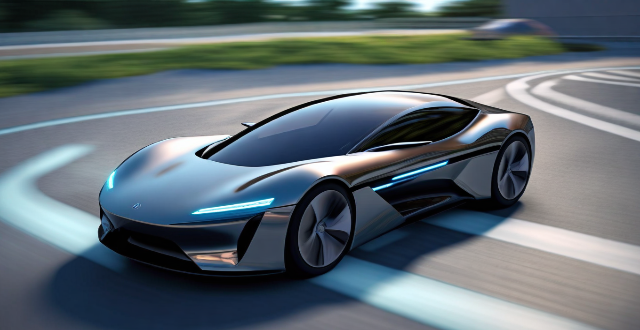Vehicle Charging

Can all electric vehicles use a super fast charging station ?
Electric vehicles (EVs) follow different charging standards and protocols that dictate the speed at which they can be charged. The type of battery technology used in an EV also affects its compatibility with super-fast charging, as some batteries may not be able to handle the high power output without damage or reduced lifespan. Manufacturers design their vehicles to work best with specific charging infrastructure, and not all EVs are equipped to take full advantage of super-fast charging. Safety concerns related to heat generation during super-fast charging must also be considered. Therefore, it is essential for EV owners to understand their vehicle's capabilities and limitations when it comes to charging options.

How many super fast charging stations are needed to effectively support the growing number of electric vehicles on the road ?
The number of super fast charging stations needed for electric vehicles depends on factors like vehicle range, driving habits, charging speed, and network density. A rough estimate suggests one station per 50-100 vehicles, but this should be adjusted based on local conditions and specific requirements.

How long does it take to charge a parallel hybrid electric vehicle (PHEV) ?
The charging time of a Parallel Hybrid Electric Vehicle (PHEV) is influenced by the battery pack size, charging method, and equipment used. Standard charging (Level 1) takes longer, while rapid charging (Level 2) significantly reduces charging time. Examples show that standard charging can take up to 15 hours for a full charge, while rapid charging can reduce this to 2-5 hours. Tips for faster charging include using rapid charging stations and ensuring high-quality charging equipment.

How does the development of electric vehicle infrastructure affect the adoption rate of EVs ?
The development of electric vehicle infrastructure, including charging stations and supporting technologies, significantly influences the adoption rate of EVs. Availability and accessibility of charging stations are critical factors affecting EV adoption rates. Increased availability and reduced range anxiety can lead to higher demand for EVs and boost their adoption rate. Easy-to-find and accessible charging stations make it easier for potential EV owners to plan their trips and charge their vehicles as needed. The cost of charging an EV also affects its adoption rate, with affordable pricing and transparent pricing information encouraging more people to adopt EVs. Overall, the growth of electric vehicle infrastructure is crucial in determining the adoption rate of EVs.

How does the availability of electric vehicle infrastructure impact the environmental benefits of EVs ?
Electric vehicle infrastructure plays a pivotal role in maximizing environmental benefits. Adequate charging networks reduce range anxiety, increase EV usage, and support optimal charging times for minimal carbon footprints. Renewable energy integration through solar and wind power further enhances green initiatives. Smart urban planning and design facilitate seamless EV adoption, while consumer behavior shifts with improved infrastructure, promoting eco-friendly habits. The development of robust and innovative EV infrastructure is crucial to fully realize the environmental potential of electric vehicles.

How does the cost of installing and using electric vehicle charging stations compare to traditional fueling stations ?
The transition from traditional combustion engines to electric vehicles significantly impacts fueling infrastructure, with costs associated with installing and using electric vehicle charging stations differing from those of traditional fueling stations. Initial installation for EV charging might be higher due to electrical upgrades required, but operational costs are generally lower than for traditional fueling stations. User costs for EV charging can also be more predictable and potentially lower when taking advantage of off-peak electricity rates.

What is the current state of electric vehicle infrastructure in major cities ?
The current state of electric vehicle (EV) infrastructure in major cities varies significantly depending on the region and local government policies. However, there are some common trends and challenges that can be observed across different urban areas. One of the most important aspects of EV infrastructure is the availability of charging stations. In many major cities, the number of public charging stations has increased rapidly in recent years, but they are still not as widespread as gas stations for traditional vehicles. This can make it difficult for EV owners to find a convenient place to charge their vehicles, especially if they live in apartment buildings without dedicated parking spots or garages. Another key factor is the speed at which EVs can be charged. While most EVs come with standard Level 1 or Level 2 charging capabilities, which take several hours to fully charge the battery, more advanced fast charging technology is becoming increasingly available. These fast chargers can replenish an EV's battery much more quickly, making them ideal for road trips or long-distance travel. However, the availability of fast chargers is still limited in many cities, and they tend to be concentrated along major highways rather than in urban areas. The cost of charging an EV can also vary widely depending on location and time of day. In some cities, public charging stations may offer free or discounted rates during off-peak hours to encourage EV adoption. However, these incentives are not always available, and some drivers may find that the cost of charging their EV is higher than expected, especially if they rely heavily on public charging stations. Finally, the accessibility and usability of EV infrastructure is another important consideration. Some cities have made significant investments in building out their EV infrastructure, including installing dedicated EV parking spots and providing real-time information about available charging stations through smartphone apps. However, other cities may still lag behind in terms of accessibility and usability, making it more difficult for EV owners to take full advantage of their vehicles' capabilities.

How long does it take to fully charge an electric vehicle at a super fast charging station ?
Electric vehicle charging times vary based on several factors such as battery capacity, charging power, battery state of charge, and temperature. Super fast charging stations can charge small city cars from 0% to 80% in about 20-30 minutes, mid-size sedans in approximately 30-45 minutes, and large SUVs in around 45-75 minutes. Tips for optimizing charging time include planning trips, using apps to find available charging stations, avoiding peak hours, monitoring battery level, and considering warm-up features in cold weather.

What are the current challenges faced by electric vehicle manufacturers ?
Electric vehicle manufacturers face challenges such as limited charging infrastructure, high battery costs, short driving range, slow charging times, limited model options, and regulatory hurdles. Addressing these issues is essential for the industry's growth and success.

How do electric car charging stations work ?
Electric car charging stations are essential facilities for powering electric vehicles, utilizing off-board conductive charging to transfer electricity. They come in three main types based on power output and charging speed: Level 1 (slowest, using standard domestic sockets), Level 2 (faster, requiring special EV charging units), and DC Fast Charging (Level 3, fastest, primarily for highway use). The charging process involves connecting the charger, activating it, transferring power (AC for Level 1&2, DC for Level 3), regulating and monitoring battery charging, and disconnecting once complete. Safety features include GFCIs, temperature monitoring, and smart software. Environmental impact depends on the electricity source; green energy sources enhance sustainability, while fossil fuels reduce benefits. As technology advances, these stations will contribute more significantly to a cleaner transport sector.

Are there any government incentives for purchasing a Series Hybrid Electric Vehicle ?
Government incentives for purchasing a Series Hybrid Electric Vehicle (HEV) vary by country and may include tax credits, rebates, exemptions from fees, charging infrastructure support, and parking benefits. These incentives can help offset the higher initial purchase price of HEVs compared to conventional gasoline vehicles.

What are the benefits of using a super fast charging station ?
Using a super-fast charging station for electric vehicles offers benefits including time efficiency, convenience, battery health optimization, environmental considerations, economic benefits, and improved user experience. These charging stations enable rapid recharging, reduce range anxiety, optimize battery lifespan, support the use of renewable energy sources, lower operational costs, and provide peace of mind for EV drivers. As technology advances, further improvements in charging infrastructure are expected to enhance these advantages.

Are fast charging car chargers safe to use ?
Fast charging car chargers have raised safety concerns due to risks such as overheating, battery degradation, and electrical hazards. To ensure safe use, it is recommended to use approved chargers, follow manufacturer's guidelines, monitor charging temperatures, avoid overcharging, inspect wiring and connections, use a surge protector, and store the charger properly. By following these tips, the risks associated with fast charging can be minimized.

Are there any government incentives for buying an electric vehicle ?
This text discusses the various government incentives available for buying an electric vehicle, including federal tax credits and income tax exemptions, state rebates and grants, sales tax exemptions, high-occupancy vehicle lane access, local parking benefits, and carpool lane access.

How do super fast charging stations compare to traditional gas stations in terms of convenience and efficiency ?
Super fast charging stations offer greater convenience and efficiency compared to traditional gas stations. They are strategically located, offer faster charging speeds, provide multiple payment options, consume less energy, and have a lower environmental impact.

How does a Series Hybrid Electric Vehicle impact the environment ?
Series hybrid electric vehicles (SHEVs) have a positive impact on the environment through reduced emissions and improved fuel efficiency. However, challenges such as battery production and waste management must be addressed to maximize their environmental benefits. The overall impact also depends on factors like the source of electricity for charging and vehicle design efficiency.

What are the main challenges in expanding electric vehicle charging infrastructure ?
The expansion of electric vehicle (EV) charging infrastructure faces several challenges, including economic and financial barriers, technological and compatibility issues, logistical and planning challenges, regulatory and policy hurdles, and social and cultural factors. Addressing these challenges through collaborative efforts between governments, industry stakeholders, and consumers can accelerate the expansion of EV charging infrastructure and pave the way for a more sustainable transportation future.

Can a Series Hybrid Electric Vehicle be charged by an external power source ?
Series HEVs can be charged by an external power source, which offers benefits like increased range and reduced emissions. To charge a series HEV using an external power source, you will need a compatible charging station or outlet. Most series HEVs come with a standard charging cord that can be plugged into a household outlet or a dedicated charging station.

What factors should be considered when planning the location of charging stations ?
When planning the location of charging stations, several factors must be considered to ensure their effectiveness and accessibility. These factors include demand analysis, geographic considerations, infrastructure availability, economic factors, environmental impact, user experience, and technology advancements. By considering these factors, planners can ensure that charging stations are strategically located to meet the needs of electric vehicle owners while also considering economic, environmental, and societal impacts.

What is the average cost of using a super fast charging station ?
The average cost of using a super fast charging station can vary depending on several factors, such as location, time of day, and type of vehicle. Urban areas tend to have higher prices due to increased demand and limited availability of charging infrastructure, while rural or less populated areas may offer lower rates. Many charging stations implement time-of-use pricing, with off-peak hours during late night or early morning being cheaper than peak hours during rush hour traffic. The size of your electric vehicle's battery and its maximum charging capacity can also affect the overall cost, with larger batteries requiring more energy to charge and potentially resulting in higher costs. The estimated range for the average cost of using a super fast charging station is $0.20 - $1.00 per kWh, but actual costs may vary widely depending on local conditions and specific charging providers.

How does a Series Hybrid Electric Vehicle work ?
A series hybrid electric vehicle (SHEV) is a type of hybrid car that utilizes two power sources: an internal combustion engine (ICE) and an electric motor. The ICE generates electricity to charge the battery pack, which in turn powers the electric motor to propel the vehicle. The main components of a series hybrid electric vehicle include the ICE, battery pack, and electric motor. The working process of a series hybrid electric vehicle involves starting the vehicle with the electric motor drawing power from the battery pack, driving at low speeds or during city driving using only the electric motor, increasing speed or accelerating by starting up the ICE to generate electricity and charge the battery pack, regenerative braking to convert kinetic energy into electrical energy and store it in the battery pack, charging the battery pack when its state of charge falls below a certain level, steady-state driving on highways with the ICE running at its optimal speed while the electric motor provides necessary power, and shutting down both the ICE and electric motor when the vehicle is turned off. Series hybrid electric vehicles offer benefits such as improved fuel efficiency, lower emissions, reduced wear and tear on the ICE, and regenerative braking.

How does the location of electric vehicle charging stations impact their usage and accessibility ?
The location of electric vehicle (EV) charging stations is crucial for their usage and accessibility. High-traffic areas, residential areas, and workplaces are ideal locations for charging stations. Proximity to shopping centers, restaurants, and entertainment venues can increase usage as people spend more time in these areas. Residential areas need charging infrastructure within walking distance or a short drive from homes. Workplaces with charging stations can encourage employees to choose electric vehicles over traditional gasoline-powered cars. By placing charging stations in these locations, we can make it more convenient for people to charge their electric vehicles and promote greater adoption of this environmentally friendly mode of transportation.

What is the difference between a standard and a rapid car charger ?
The main differences between standard and rapid car chargers are their charging speed, power output, and compatibility with different vehicles. Standard chargers offer slower charging at around 3-7 kilowatts (kW), making them suitable for overnight charging or when time is not a critical factor. Rapid chargers, on the other hand, provide much faster charging speeds ranging from 22 kW to over 150 kW, reducing charging times significantly. While most standard chargers are compatible with various types of electric vehicles (EVs), they may not be able to deliver the maximum charging rate that some vehicles can accept. Rapid chargers are designed to work with many modern EVs, but not all vehicles may be able to utilize their full capacity. It's essential to check if your vehicle supports rapid charging before using one.

How long does a typical power battery last in an electric vehicle ?
Electric vehicles (EVs) have become increasingly popular due to their environmental benefits and lower operating costs. One of the most common concerns for potential EV owners is the lifespan of the vehicle's power battery. In this article, we will explore the typical lifespan of a power battery in an electric vehicle and factors that can affect it. The lifespan of a power battery in an electric vehicle depends on several factors, including the type of battery, driving habits, and maintenance practices. However, a general rule of thumb is that a typical power battery lasts between 8-15 years or 100,000-200,000 miles. Several factors can impact the lifespan of a power battery in an electric vehicle. These include: - Type of Battery: The two most common types of batteries used in EVs are lithium-ion and nickel-metal hydride. Lithium-ion batteries generally have a longer lifespan than nickel-metal hydride batteries. - Driving Habits: Frequent rapid acceleration and braking can shorten the lifespan of a power battery. Additionally, driving at high speeds and in hot temperatures can also negatively impact battery life. - Maintenance Practices: Proper maintenance practices, such as regularly checking and maintaining the cooling system, can help extend the lifespan of a power battery. Neglecting maintenance can lead to premature battery failure. - Charging Habits: Charging the battery to 100% every time can shorten its lifespan. It is recommended to charge the battery to around 80% to prolong its lifespan. As a power battery ages, it may start showing signs of failure. Some common signs include: - Reduced Range: If you notice a significant decrease in the distance your EV can travel on a single charge, it could be a sign that your power battery is failing. - Slow Charging: If your EV takes longer to charge than usual, it could be a sign that your power battery is losing capacity. - Decreased Performance: If you notice a decline in your EV's overall performance, such as slower acceleration or reduced top speed, it could be due to a failing power battery. - Bulging or Swelling: If you notice any physical changes to your power battery, such as bulging or swelling, it is a clear sign that it needs to be replaced. In conclusion, the typical lifespan of a power battery in an electric vehicle is between 8-15 years or 100,000-200,000 miles. However, several factors can impact the lifespan of a power battery, including the type of battery, driving habits, maintenance practices, and charging habits. By being mindful of these factors and properly maintaining your EV's power battery, you can help extend its lifespan and enjoy many years of reliable performance.

How does a Compound Hybrid Electric Vehicle work ?
A compound hybrid electric vehicle (CHEV) is a type of hybrid vehicle that combines the power of an internal combustion engine (ICE) with two or more electric motors, aiming to improve fuel efficiency, reduce emissions, and increase overall performance. The system intelligently manages multiple power sources to provide an efficient, powerful, and environmentally friendly driving experience.

What is the future outlook for electric vehicle adoption globally ?
The future outlook for electric vehicle adoption globally is promising, driven by government policies, technological advancements, and changing consumer attitudes towards sustainability. Governments are offering tax credits, setting emission standards, and investing in charging infrastructure to encourage EV adoption. Technological advancements such as improved battery technology, autonomous driving, and smart grid integration are also driving adoption. Consumer attitudes towards sustainability and environmental concerns are contributing to the growth of EV adoption. However, challenges and barriers such as high upfront costs, lack of charging infrastructure, and range anxiety must be addressed to achieve widespread adoption.

What role do private companies play in building and operating EV charging networks ?
Private companies play a pivotal role in the development and operation of electric vehicle (EV) charging networks, contributing to infrastructure development, network operation, partnerships and collaboration, and data analysis and optimization. They are involved in planning, design, construction, technology innovation, maintenance, management, customer service, pricing strategies, public-private partnerships, industry alliances, community engagement, performance tracking, and market research. Their efforts ensure that EV charging infrastructure is developed efficiently, innovatively, and with the end-user in mind.

How should I prepare my vehicle for a long-distance road trip ?
Preparing Your Vehicle for a Long-Distance Road Trip A long-distance road trip is an exciting adventure, but it's essential to ensure that your vehicle is in top condition before hitting the open road. Here are some steps you can take to prepare your car for the journey ahead: Check the basics such as tires, fluids, lights, and battery. Perform safety checks on brakes, suspension, belts, and hoses. Make sure your entertainment system and charging ports are working correctly. Consider installing seat covers and using organizers or storage solutions to keep items tidy and accessible during the trip. Don't forget to pack an emergency kit with jumper cables, a flashlight, reflective triangles, and a first aid kit just in case you encounter any issues along the way.

How does a Series Hybrid Electric Vehicle compare to a Parallel Hybrid Electric Vehicle ?
Comparison between Series Hybrid Electric Vehicle and Parallel Hybrid Electric Vehicle highlights the differences in power transmission, battery dependency, fuel efficiency, performance, cost, complexity, and regenerative braking capabilities of both types. The series hybrid is more efficient for city driving, while the parallel hybrid suits highway driving better. The choice depends on the user's driving habits and needs, with both offering environmental and economic benefits over traditional vehicles.

What is the impact of charging network availability on the adoption of electric vehicles ?
The impact of charging network availability on the adoption of electric vehicles is significant. Factors such as range anxiety, charging time, and the cost of building and maintaining charging infrastructure can influence consumer confidence in EVs. Strategies to improve charging network availability include public-private partnerships, incentives and regulations, and innovation in charging technology. A well-developed charging network can alleviate concerns about EVs and accelerate their adoption.